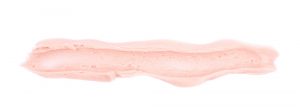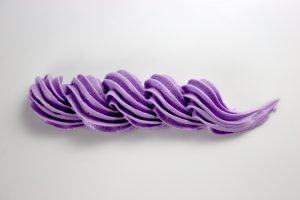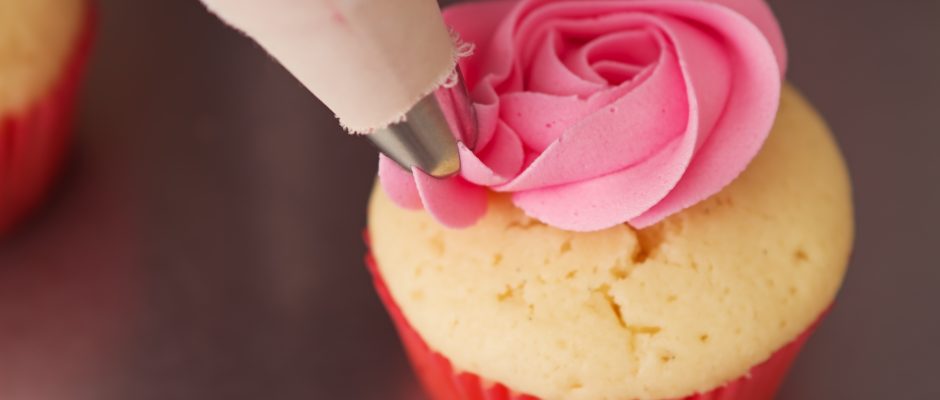Piping frosting onto cupcakes and cakes can seem a bit intimidating, but it’s a piece of a cake with these tips and tricks from Home Baking Association member Domino Sugar. Whether you’re just trying to pipe a border on top of your cake, or you want to step up your piping skills, they’ve got you covered!
Tip #1: Make Sure Your Frosting is the Right Consistency
The first tip I have is to check the consistency of your frosting. This is super important, because even if you have perfect technique, if your frosting is too thick or too thin, it’ll be a struggle.
The frosting should be smooth, easy to stir, and it will be able to keep its shape. I like to give my frosting a good stir with a rubber spatula for about a minute to push out any excess air and make it super smooth before I place it into your piping bag.

Tip #2: Fill the Piping Bag Properly
Another important tip is to make sure that you fill your frosting bag properly. Domino Sugar recommends cutting the bottom of the bag with scissors, dropping your piping tip into the bag, then making sure the piping tip fits snuggly at the bottom of the bag.
Next, fold the top of the bag over your hand or place the bag in tall cup, and carefully scoop the frosting into the bag. As you do this, keep an eye out for any air pockets and do your best to prevent any from getting stuck in the bag.
Once the bag is full, squeeze the frosting down to the tip, twist the top of the bag, and seal it with either a clip or rubber band. This will make the piping bag easy to use later and prevent frosting from oozing out of the top of the bag.
Tip #3: Apply Even Pressure
Now onto the main event, piping the frosting! The most important thing to keep in mind as you pipe is to apply even pressure with your hand as you squeeze. This is the secret behind an even, uniform look.
This can be difficult if you’re just learning to use a piping bag, but it gets easier the more you practice. It’s going to work, we promise!
Tip #4: Practice Makes Perfect
Speaking of practice, practice really does make perfect! If you’re trying out a new piping technique or are new to piping all together, it’s highly recommended to practice on a piece of parchment paper.
So much of piping is getting comfortable holding the bag and muscle memory, and a little practice helps with both of these immensely. Especiall if you’re experimenting with a new piping tip that you haven’t used before.
The best part is that you can scoop up the frosting once you’re done and place it back in your piping bag, so no frosting goes to waste.

Tip #5: Avoid Heat Transfer from Your Hands
Here’s a final tip about piping; one many of us have learned the hard way.
If you’re piping a lot of details or will be holding the piping bag in your hand for an extended period, cover the piping bag with either a couple sheets of paper towel or a thin kitchen towel.
This will help minimize the heat transfer from your hands into the frosting. If you don’t do this, the heat from your hands can warm up the frosting and change its consistency and color. It usually makes the frosting thinner and darker in color.







Comments are closed.